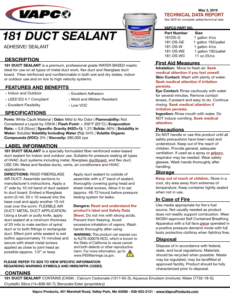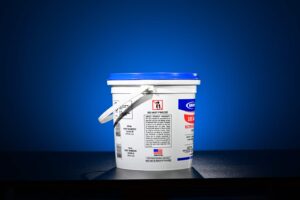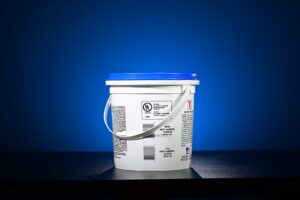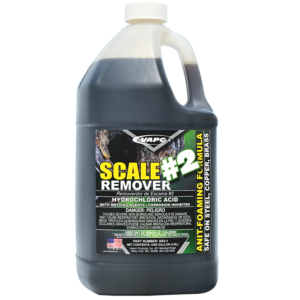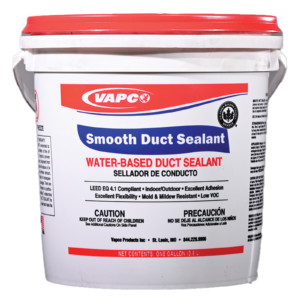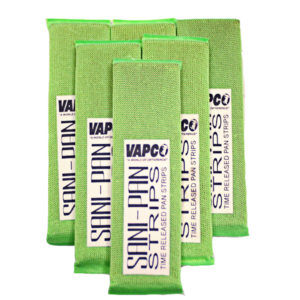181 DUCT SEALANT FIBERED
Premium Water-Based Mastic for HVAC Systems
Seal and Insulate Your HVAC Ducts with 181 DUCT SEALANT from Vapco Products. This high-quality,professional-grade mastic is designed for use on all types of metal ductwork, flex duct, and fiberglass duct board. Its water-based formula is nonflammable and safe for both indoor and outdoor applications.
Key Features and Benefits:
- LEED EQ 4.1 Compliant: Contributes to healthier indoor air quality.
- Excellent Flexibility: Accommodates movement and vibration in HVAC systems.
- Superior Adhesion: Forms a strong, durable seal to prevent air leaks.
- Mold and Mildew Resistant: Helps maintain a clean and healthy environment.
- Low VOC: Minimizes harmful emissions for a healthier indoor environment.
Ideal for:
- Sealing metal ductwork
- Sealing flex duct
- Sealing fiberglass duct board
- Low and high-velocity HVAC systems
Ensure optimal performance and energy efficiency in your HVAC system with 181 DUCT SEALANT from Vapco Products. Order yours today!
Part Number; Size
- 181DS-G 1 gallon 2/cs (Grey Fibered)
- 181DS-GE 1 gallon (Grey Fibered)
- 181DS-W 1 gallon 2/cs. (White Fibered)
- 181DS-WE 1 gallon (White Fibered)
Seal Your HVAC Ducts with Precision for Optimal Performance
Rigid Fiberglass Air Duct:
- Assemble Sections: Follow the manufacturer’s instructions to connect the fiberglass air duct sections.
- Apply Base Coat: Apply a 3-inch wide, 10-mil thick band of duct sealant to the duct board.
- Embed Fiberglass Scrim: Place a 5-mil fiberglass scrim with a 20×10 weave into the wet sealant.
- Apply Top Coat: Apply another 10-mil coat of duct sealant over the embedded scrim.
Flexible Air Duct/Metal Duct Application:
- Prepare Joints: Using a brush or putty knife, apply duct sealant to a minimum thickness of 20 mils to the male section of the spiral duct or to both fittings in a rectangular duct.
- Join Sections: Quickly join the sections while the sealant is wet (within approximately 15 minutes).
- Secure with Screws: Secure the joint using sheet metal screws placed as close to the joint head as possible (approximately 1/2 inch or less).
- Seal Exterior: Apply a 3-inch band of duct sealant to the outside of the assembled joint, covering the head and sheet metal screws.
- Allow to Set: Let the sealant set for approximately 48-72 hours.
- Pressure Test: After the sealant has set, pressure test the system for leaks to ensure a tight seal.
Tips for Optimal Results:
- Follow Manufacturer’s Instructions: Always refer to the specific instructions provided by the duct sealant manufacturer.
- Work Quickly: For flexible duct and metal duct applications, ensure prompt joint assembly while the sealant is wet.
- Use Quality Sealant: Choose a high-quality duct sealant designed for the specific application.
- Properly Secure Screws: Ensure that the sheet metal screws are securely fastened to prevent leaks.
DANGERS & PRECAUTIONS:
Read and understand the product’s label and Safety Data Sheet. Do not mix with strong acids. Prevent from freezing. Avoid excessive inhalation of vapors. Do NOT handle or use this product until all safety precautions have been read and understood. Keep out of the reach of children. Provide general, adequate ventilation. If used as a spray or airborne, a respirator may be needed. Wear safety glasses. Wash hands thoroughly after handling.
Contact Us
News and Updates
Subscribe on Youtube
Follow Us on Facebook
SDS
181 DUCT SEALANT SDS REV. 1
Vapco Products, Inc.
Safety Data Sheet
181 Duct Sealant
SECTION 1: Identification
1.1 GHS Product identifier
| Detail |
Value |
| Product name |
181 Duct Sealant |
| Product number |
181DS-G, 181DS-GE, 181DS-W, 181DS-WE |
| Brand |
Vapco |
1.3 Recommended use of the chemical and restrictions on use
1.4 Supplier’s details
| Detail |
Value |
| Name |
Vapco Products, Inc. |
| Address |
401 Marshall Road, Valley Park, Missouri 63088, United States |
| Telephone |
(636) 923-2121 |
| Fax |
(636) 923-3002 |
| Email |
[email protected] |
1.5 Emergency phone number
SECTION 2: Hazard identification
2.1 Classification of the substance or mixture
-
GHS classification in accordance with: OSHA (29 CFR 1910.1200, 2024)
-
Not a hazardous substance or mixture.
2.2 GHS label elements, including precautionary statements
2.3 Other hazards which do not result in classification
Statement regarding ingredients of unknown toxicity: This product contains the following percentage of chemicals of unknown toxicity: 60%.
SECTION 3: Composition/information on ingredients
3.2 Mixtures
| Hazardous components |
Concentration (weight) |
CAS no. |
| NJTS-50078-NCD |
10 – 30 % |
N/A |
SECTION 4: First-aid measures
4.1 Description of necessary first-aid measures
-
General advice: Never give anything by mouth to an unconscious person. If you feel unwell, seek medical advice (show the label where possible).
-
If inhaled: First, take proper precautions to ensure your own safety before attempting rescue (e.g. wear appropriate respiratory protective equipment, use the buddy system), then remove the exposed person to fresh air. Keep at rest in a position comfortable for breathing. Get medical advice/attention.
-
In case of skin contact: Immediately drench affected area with water for at least 15 minutes. Remove contaminated clothing immediately. Obtain medical attention if irritation develops or persists.
-
In case of eye contact: Immediately rinse with water for at least 15 minutes. Remove contact lenses, if present and easy to do. Continue rinsing. Obtain medical attention if irritation develops or persists.
-
If swallowed: Rinse mouth. Do NOT induce vomiting. Obtain medical attention.
4.2 Most important symptoms/effects, acute and delayed
4.3 Indication of immediate medical attention and special treatment needed, if necessary
SECTION 5: Fire-fighting measures
5.1 Suitable extinguishing media
5.2 Specific hazards arising from the chemical
5.3 Special protective actions for fire-fighters
-
Precautionary Fire Measures: Exercise caution when fighting any chemical fire.
-
Firefighting Instructions: Use dry chemical, foam, or carbon dioxide ($text{CO}_2$). Do not breathe fumes from fire or vapors from decomposition. Do NOT fight fire when fire reaches containers. Evacuate area. Fight fire remotely due to the risk of explosion. Shut off all sources of ignition. Use water spray or fog for cooling exposed containers.
-
Protection During Firefighting: Do not enter fire area without proper protective equipment, including respiratory protection. Wear NIOSH-approved Self-Contained Breathing Apparatus with a full face piece operated in a positive pressure demand mode with full body protective clothing when fighting fires.
-
Hazardous Combustion Products: Carbon oxide(s).
SECTION 6: Accidental release measures
6.1 Personal precautions, protective equipment and emergency procedures
-
General Measures: Do not get in eyes, on skin, or on clothing. Do not breathe vapors, spray, mist, gas. Keep away from heat, hot surfaces, sparks, open flames, and other ignition sources. No smoking.
-
For Non-Emergency Personnel
-
For Emergency Personnel
-
Protective Equipment: Equip cleanup crew with proper protection.
-
Emergency Procedure: Eliminate ignition sources first, then ventilate the area. Evacuate unnecessary personnel, isolate, and ventilate area. Upon arrival at the scene, a first responder is expected to recognize the presence of dangerous goods, protect oneself and the public, secure the area, and call for the assistance of trained personnel as soon as conditions permit.
6.3 Methods and materials for containment and cleaning up
-
For Containment: Ventilate the area. Contain any spills with dikes or absorbents to prevent further migration and entry into sewers or streams. As an immediate precautionary measure, isolate spill or leak area in all directions.
-
Methods for Cleaning Up: Clean up spills immediately and dispose of waste safely. Eliminate all ignition sources. Ventilate area. Stop the ignition source of the release, if safe to do so. Consider the use of water spray to disperse vapors. Isolate the area until gas has dispersed. Ventilate and gas test area before entering. Take up liquid spill into absorbent material. Transfer spilled material to a suitable container for disposal. Contact competent authorities after a spill.
-
Waste Disposal: Dispose of in accordance with local, regional, national, and international regulations. Containers may be hazardous when empty. Do not flame cut, braze, or weld. Product should be fully characterized prior to disposal (40 CFR 261).
Reference to other sections: See Section 8 for exposure controls and personal protection and Section 13 for disposal considerations.
SECTION 7: Handling and storage
7.1 Precautions for safe handling
-
Precautions for Safe Handling: Do not handle until all safety precautions have been read and understood. Avoid contact with skin, eyes and clothing. Do not breathe gas, mist, spray, vapors. Wash hands and other exposed areas with mild soap and water before eating, drinking or smoking and when leaving work. Do not spray on open flame or other ignition source.
-
Additional Hazards When Processed: Do not pressurize, cut, or weld containers. Ruptured cylinders may rocket. Pressurized container: May burst if heated. Do not pierce or burn, even after use.
-
Hygiene Measures: Handle in accordance with good industrial hygiene and safety procedures.
-
Other Precautions: Keep out of reach of children. Follow label instructions. Vapors may collect in low lying areas.
7.2 Conditions for safe storage, including any incompatibilities
-
Technical Measures: Comply with applicable regulations. Proper grounding procedures to avoid static electricity should be followed.
-
Storage Conditions: Store in a dry, cool place. Keep only in the original container in a cool, well-ventilated place away from ignition sources. Protect from sunlight. Do not expose to temperatures exceeding $50^circtext{C}/122^circtext{F}$. Keep/Store away from direct sunlight, extremely high or low temperatures and incompatible materials. Store locked up/in a secure area.
-
Incompatible Materials: None known.
SECTION 8: Exposure controls/personal protection
8.2 Appropriate engineering controls
-
Emergency eye wash fountains and safety showers should be available in the immediate vicinity of any potential exposure. Ensure adequate ventilation, especially in confined areas. Use explosion-proof equipment. Proper grounding procedures to avoid static electricity should be followed. Use only outdoors or in well-ventilated area. Ensure all local, regional, national, and international regulations are being observed. Obtain special instructions before use. Do not handle until all safety precautions have been read and understood.
8.3 Individual protection measures, such as personal protective equipment (PPE)
-
Eye/face protection: Chemical safety goggles. Insufficient ventilation: wear respiratory protection. Respiratory protection of the dependent type.
-
Skin protection: Wear protective gloves and clothing.
-
Body protection: Wear suitable protective clothing. Wear protective gloves. Chemical resistant materials and fabrics. Wear fire/flame resistant/retardant clothing.
-
Respiratory protection: Use a NIOSH-approved Self-Containing Breathing Apparatus whenever exposure may exceed established Occupational Exposure Limits.
SECTION 9: Physical and chemical properties
Basic physical and chemical properties
| Property |
Value |
| Physical state |
Liquid |
| Appearance |
Caulk material |
| Color |
Grey or white |
| Odor |
Mild to no odor |
| Odor threshold |
N/A |
| Melting point/freezing point |
N/D |
| Boiling point or initial boiling point and boiling range |
N/D |
| Flammability |
N/D |
| Lower and upper explosion limit/flammability limit |
N/D |
| Flash point |
$>200^circtext{F}$ ($93^circtext{C}$) |
| Auto-ignition temperature |
N/D |
| Decomposition temperature |
N/D |
| pH |
N/A |
| Kinematic viscosity |
280,000 cPs |
| Solubility |
Soluble in water |
| Partition coefficient n-octanol/water (log value) |
N/D |
| Vapor pressure |
N/D |
| Evaporation rate |
$<0.8$ (Slow) |
| Density and/or relative density |
1.31 |
| Relative vapor density |
N/A |
SECTION 10: Stability and reactivity
10.1 Reactivity
10.2 Chemical stability
10.3 Possibility of hazardous reactions
10.4 Conditions to avoid
10.5 Incompatible materials
10.6 Hazardous decomposition products
SECTION 11: Toxicological information
Information on toxicological effects
-
Acute toxicity: Not established.
-
Skin corrosion/irritation: Causes mild irritation with prolonged exposure.
-
Serious eye damage/irritation: Causes irritation, blurred vision.
-
Respiratory or skin sensitization: Causes gastrointestinal irritation.
-
Germ cell mutagenicity: None known.
-
Carcinogenicity: None known.
-
Reproductive toxicity: None known.
-
Specific target organ toxicity (STOT) – single exposure: None known.
-
Specific target organ toxicity (STOT) – repeated exposure: None known.
-
Aspiration hazard: Not likely due to low vapor pressure.
SECTION 12: Ecological information
-
Toxicity: Not established.
-
Persistence and degradability: Component(s) of this product are not biodegradable.
-
Bioaccumulative potential: This product is not expected to bioaccumulate.
-
Mobility in soil: This product is mobile in soil.
SECTION 13: Disposal considerations
Disposal methods
-
Product disposal: Dispose of contents/container in accordance with local, regional, national, and international regulations. Do not pierce or burn, even after use.
-
Waste treatment: This material, as supplied, is hazardous waste according to federal regulations (U.S. EPA 40CFR 261). Dispose of in accordance with federal, state, and local regulations.
-
Other disposal recommendations: Container may remain hazardous when empty. Continue to observe all precautions. Do not puncture or incinerate container. Product should be fully characterized prior to disposal.
SECTION 14: Transport information
-
DOT (US): Not dangerous goods
-
IMDG: Not dangerous goods
-
IATA: Not dangerous goods
SECTION 15: Regulatory information
15.1 Safety, health and environmental regulations specific for the product in question
-
California Proposition 65 Chemicals List: This product contains a chemical known to the State of California to cause cancer and birth defects or other reproductive harm: NJTS-50078-NCD.
-
US EPA TSCA public inventory: All chemicals are listed or exempt.
SECTION 16: Other information
16.1 Further information/disclaimer
To the best of our knowledge, information contained herein is accurate. However there is no assumption of liability for the accuracy or completeness of the information contained herein. Final determination of suitability of any material is the sole responsibility of the user. All materials may present unknown hazards and should be used with caution. Although certain hazards are described herein, we cannot guarantee that these are the only hazard which exists. The information contained in this SDS was obtained from current and reliable sources; however, the data is provided without warranty, expressed or implied, regarding its correctness or accuracy. Since the conditions of handling, storage and disposal of this product are beyond the control of the manufacturer, the manufacturer will not be responsible for loss, injury, or expense arising out of the products improper use. No warranty, expressed or inferred, regarding the product described in this SDS shall be created or inferred by any statement in this SDS. Various government agencies may have specific regulations regarding the transportation, handling, storage, use, or disposal of this product which may not be covered by this SDS. The user is responsible for full compliance.
16.2 Preparation information
| Detail |
Value |
| Prepared by |
Jessica Wilson |
| Date prepared |
3-13-2025 |


